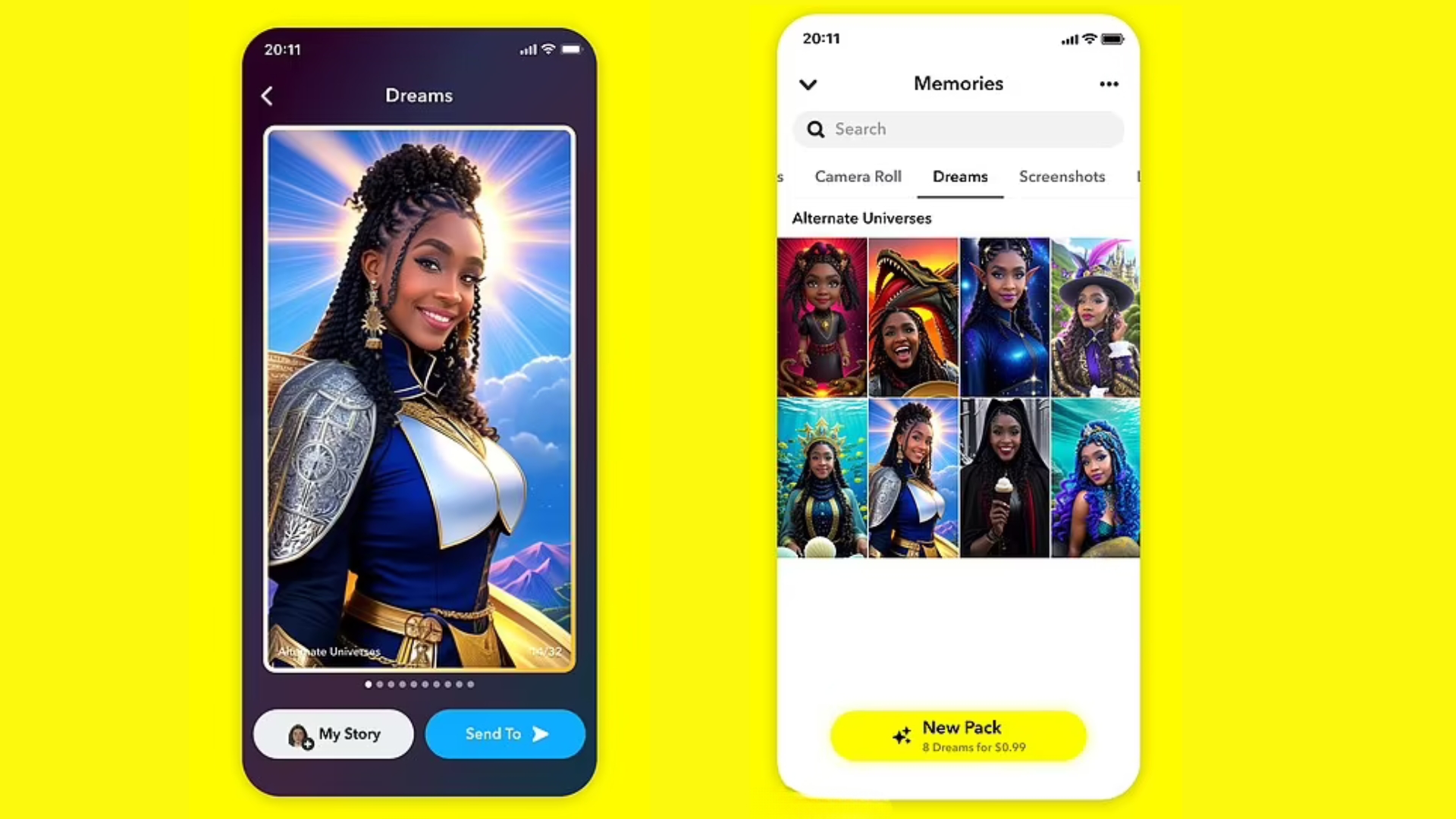Snapchat simply joined the bogus intelligence (AI) taking part in subject, asserting its new AI-selfie characteristic, “Dreams,” on August 29, powered by open-source expertise.
This newest addition, discovered inside the Recollections part of Snapchat’s digicam roll, permits customers to discover generative AI-generated selfies, however will initially rollout to Australia and New Zealand’s consumer base. Nonetheless, Snap Inc., the mother or father firm of Snapchat, expects to develop the roll-out to customers worldwide in upcoming weeks.
The rollout of Dreams started in Australia and New Zealand, with availability increasing to customers worldwide within the upcoming weeks.
Dreams comes on the heels of Snap’s earlier launch of the My AI chatbot and is an try to seize the recognition of AI-enhanced selfies like these discovered on apps akin to Lensa.
When Lenses first arrived on the platform in 2015, Snapchat customers had enjoyable altering their look and magnificence via augmented actuality (AR) – together with “sprouting dog ears” and altering their hair colour.
Creating Your Personal ‘Dream’
To make use of Dreams, customers add a sequence of private selfies inside the app, specifically tailor-made for the characteristic. Snapchat then presents a collection of themed packs, every containing eight AI-generated images.
Themes embrace ideas like doppelgangers or back-to-school appears to be like. Whereas the primary Dreams pack is complimentary, extra packs will be acquired for $1 via in-app purchases.
In response to Jack Brody, Snap’s VP of Product, Dreams aligns with Snapchat’s playful and inventive strategy to partaking its consumer base.
Snap gave The Verge’s Alex Heath early entry to Snapchat’s Dreams characteristic to strive for his editorial overview, the place he mentioned it took about half-hour for him to obtain his generated Dream photographs after importing his selfie and agreeing to its Phrases of Service.
A significant takeaway from the Dreams’ Phrases of Service is that Snapchat customers will not be allowed to purchase Dreams for anybody else’s Snapchat account, however they can share Dreams on and off the platform. If a consumer decides to share Dreams off of Snapchat, they have to maintain the watermark and/or every other options or logos which might be embedded of their last Dreams output.
Nonetheless, in accordance with Heath, the outcomes had been a combined bag by way of resemblance to his authentic picture.
“Several of the Dreams I received didn’t really look like me, although there were a couple of funny ones I would consider sharing as a joke,” Heath mentioned in his overview. “Most of the images didn’t seem to capture my likeness relative to the selfies I’ve made in Lensa and other AI apps. He added that the second doppelganger-themed pack he tried produced results that “were all over the place.”
Snap additionally emphasised that customers can’t create their very own Dreams with customized prompts for now. Brody hinted that extra AI choices would “arrive eventually,” akin to the way in which the corporate expanded its Lens choices to incorporate community-created designs.
“If you look at the way we approached AR, for instance, all of the Lenses that we created when we first launched were made in-house,” Brody advised The Verge. “Over time, we did open this up to the community and we have a robust process for ensuring that community Lenses conform with our community guidelines and are also loved by the community. So, I think when you look at Dreams, that’s the way we’re approaching it.”
Brody additionally advised The Verge that every artwork fashion it presently presents was made by Snap staff.
The corporate additionally plans to permit customers to incorporate pals of their Dreams, with customers consenting to this even earlier than utilizing Dreams in single-player mode. The phrases of service additionally trace at Sponsored Dreams, suggesting that bigger IP franchises and types could quickly turn into a part of the Dreams expertise.
Regardless of not grabbing headlines as typically as a few of its opponents, Snapchat maintains a considerable consumer base. In July, Snap reported 397 million each day energetic customers (DAU) within the final quarter, and is anticipating DAU to succeed in between 405 million and 406 million by the third quarter, in accordance with CNBC.
Just like a lot of huge tech having to chop again on prices and labor, Snap carried out its cost-cutting plan in 2022, shedding 20% of the corporate’s general workforce of 6,400 on the time. As of June 30, 2023, Snap reported having 5,286 full-time employees.
With the launch of Dreams, Snapchat is seeking to solidify its place as an AI contender within the social media panorama.
Editor’s observe: This text was written by an nft now workers member in collaboration with OpenAI’s GPT-4.


